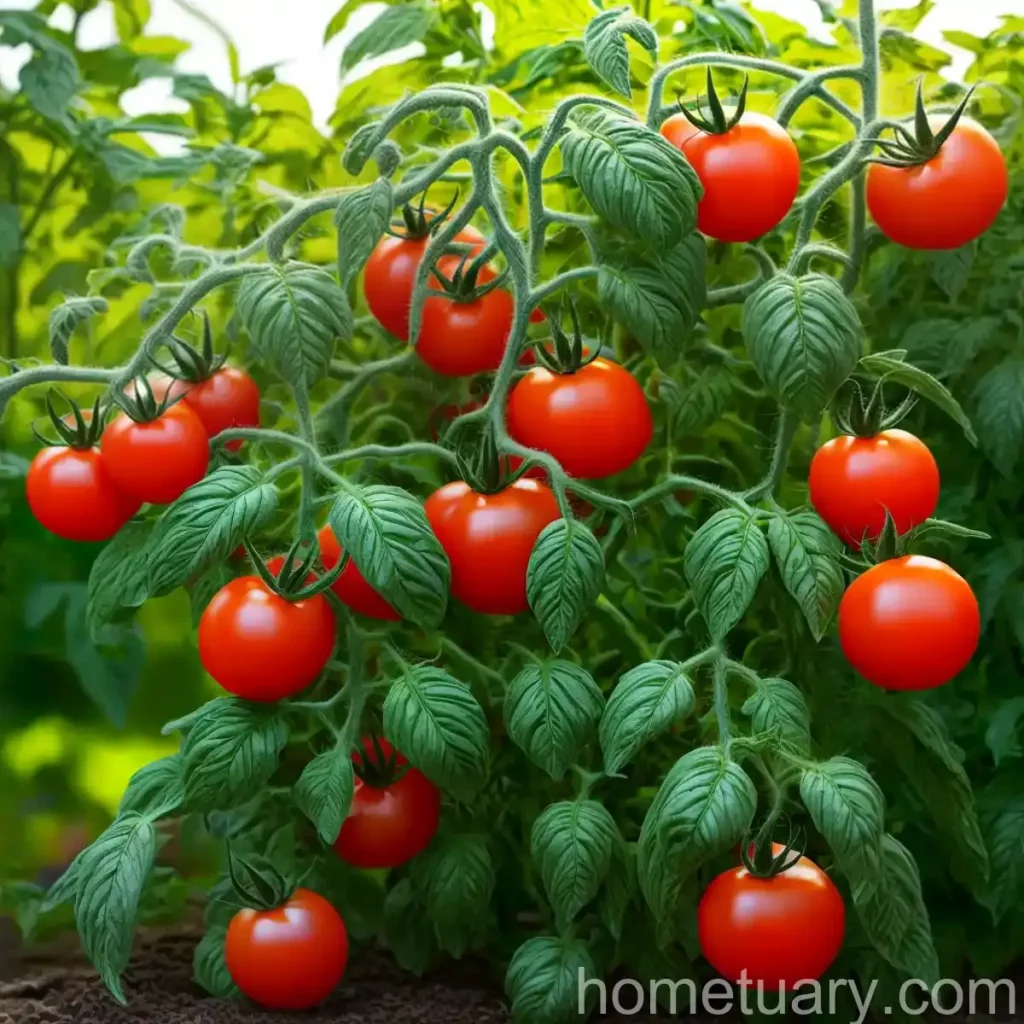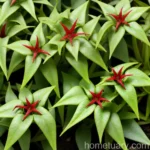Tomato (Lycopersicon esculentum ‘Midnight Snack’)
As a plant scientist, exploring the world of plants is an exhilarating and fulfilling experience. One such fascinating plant is the tomato (Lycopersicon esculentum ‘Midnight Snack’). In this comprehensive guide, we will delve into the culture, uses, cultivation practices, pests, diseases, and more related to the Midnight Snack tomato. Let’s embark on a journey to uncover the intricacies and marvels of this remarkable plant.
What is the Tomato (Lycopersicon esculentum ‘Midnight Snack’)?
The Midnight Snack tomato (Lycopersicon esculentum ‘Midnight Snack’) is a captivating variety of tomato known for its extraordinary attributes. This hybrid cultivar exemplifies the art of breeding, and it has gained widespread popularity among home gardeners and commercial growers alike.
Key Takeaways – Tomato (Lycopersicon esculentum ‘Midnight Snack’)
- Scientific Name: Lycopersicon esculentum ‘Midnight Snack’
- Variety: Hybrid cultivar
- Characteristics: Indeterminate, snack-size fruits, anthocyanin-rich
- Color: Dark purple to almost black
- Flavor: Sweet, rich, and robust
Now, let’s embark on a detailed exploration of the Midnight Snack tomato, encompassing its cultural significance, uses, cultivation requirements, and maintenance.
Culture of Tomato (Lycopersicon esculentum ‘Midnight Snack’)
Understanding the cultural significance of the Midnight Snack tomato is vital in appreciating its value in various horticultural settings.
Uses
The uses of the Midnight Snack tomato are versatile and abundant. This variety is primarily cultivated for:
- Fresh Consumption: The snack-size fruits are perfect for snacking, salads, and garnishes, adding color and flavor to culinary creations.
- Gourmet Dishes: Their rich and sweet flavor makes them an ideal choice for gourmet dishes, salsas, and sauces.
- Anthocyanin-Rich Attribute: Due to their high anthocyanin content—which gives them their characteristic dark color—they are a unique addition to culinary and gastronomic experiences.
Water
Adequate water supply is crucial for the healthy growth and development of Midnight Snack tomatoes. Maintaining consistent soil moisture levels, especially during the fruiting stage, is essential for preventing issues such as blossom end rot and cracking.
Sunlight
Tomatoes, including the Midnight Snack variety, thrive in full sunlight. Providing at least 6-8 hours of direct sunlight daily is vital for robust growth, flower production, and fruit development.
Fertilizer
Fertilization plays a pivotal role in ensuring the optimum growth and yield of Midnight Snack tomatoes. Employing a balanced fertilizer with an emphasis on phosphorus for fruit development, alongside adequate potassium for overall plant vigor, is recommended.
Soil
The selection of well-draining, nutrient-rich soil is paramount for the successful cultivation of Midnight Snack tomatoes. A loamy soil with good water retention capacity and ample organic matter content is ideal for fostering healthy root development and overall plant vitality.
Pruning
Pruning practices contribute significantly to the health and productivity of the Midnight Snack tomato plants. Regular removal of suckers, weak growth, and excess foliage can enhance airflow, light penetration, and fruit quality.
Propagation
Midnight Snack tomatoes can be propagated from seeds or through vegetative methods. Seed propagation is commonly practiced, offering an array of possibilities for home gardeners and commercial growers to cultivate this alluring variety.
Container Popularity
The compact growth habit and fruiting characteristics of the Midnight Snack tomato make it a popular choice for container gardening enthusiasts. Its suitability for containers allows urban and space-constrained gardeners to enjoy the pleasures of growing tomatoes.
Common Diseases Affecting Tomato Plants
The robustness and resilience of the Midnight Snack tomato plants render them relatively resistant to several common diseases. However, understanding the potential diseases and their symptoms is essential for effective disease management and prevention.
Disease Diagnosis
Common diseases that may affect tomato plants, including the Midnight Snack variety, include but are not limited to:
- Early Blight (Alternaria solani): Identified by concentric rings on lower leaves, leading to leaf yellowing and browning.
- Late Blight (Phytophthora infestans): Characterized by dark lesions on leaves, stems, and fruits, often leading to plant defoliation.
- Blossom End Rot: Manifests as dark, sunken areas at the blossom end of fruits due to calcium deficiency, irregular watering, or rapid growth under adverse conditions.
Proper diagnosis and timely intervention are imperative in mitigating the impact of these and other potential diseases on Midnight Snack tomato plants.
Common Pests Infesting Tomato Plants
Pest infestations pose a significant threat to the health and productivity of tomato plants, necessitating proactive measures for prevention and management.
Common Pests
Tomato plants, including the Midnight Snack variety, are susceptible to various pests, including:
- Aphids: Small, soft-bodied insects that can cause leaf curling, yellowing, and distorted growth.
- Hornworms: Large, green caterpillars that can rapidly defoliate and damage tomato plants, particularly during their larval stage.
- Whiteflies: Tiny, sap-feeding insects that can lead to leaf yellowing, reduced vigor, and sooty mold development.
Implementing integrated pest management (IPM) strategies and employing natural predators and organic controls can help mitigate pest pressures effectively.
Botanist’s Tips for Growing Midnight Snack Tomatoes
From a botanical standpoint, cultivating Midnight Snack tomatoes encompasses a blend of science, art, and practical skills that can elevate the gardening experience. Here are some botanist-approved tips for growing and nurturing Midnight Snack tomatoes successfully:
- Soil Preparation: Prioritize soil enrichment with organic matter and balanced fertilizers to create an optimal growing environment for the tomatoes.
- Support and Training: Employ sturdy stakes, trellises, or cages to support the vigorous growth and fruit production of indeterminate Midnight Snack tomato plants.
- Healthy Pruning Practices: Regularly remove suckers and excess foliage for improved air circulation and light penetration throughout the plant canopy.
- Consistent Watering: Maintain consistent soil moisture to minimize fluctuations and prevent issues such as cracking, blossom end rot, and irregular fruit development.
- Integrated Pest and Disease Management: Implement a multifaceted approach to pest and disease control, encompassing preventive measures, natural predators, and targeted interventions.
- Harvesting Technique: Harvest ripe Midnight Snack tomatoes carefully to avoid damage to the fruits and the plant, ensuring a bountiful and continuous harvest.
Fun Facts About Midnight Snack Tomatoes
In addition to their culinary and horticultural significance, Midnight Snack tomatoes present several intriguing and fascinating attributes. Here are some fun facts about the Midnight Snack tomato variety that highlight its uniqueness and appeal:
- The striking, dark coloration of Midnight Snack tomatoes is attributed to the presence of anthocyanins, which are beneficial antioxidants.
- The sweet and rich flavor profile of Midnight Snack tomatoes makes them a sought-after choice for creating visually appealing and flavorful culinary dishes.
- Their versatility in fresh consumption, gourmet cooking, and decorative purposes exemplifies their remarkable culinary potential and aesthetic appeal.
- Midnight Snack tomatoes offer a captivating visual spectrum, transitioning from dark purple to almost black as they ripen, adding an element of intrigue to gardening and gastronomy.
These fun facts not only enhance our appreciation for the Midnight Snack tomato but also underscore its remarkable qualities and appeal in culinary and horticultural contexts.
Links to External Resources
For those seeking in-depth information and resources related to tomato (Lycopersicon esculentum ‘Midnight Snack’) and tomato cultivation in general, the following external links provide valuable insights, guidance, and further exploration opportunities:
- Tomato Plant Varieties – The Spruce
- Midnight Snack Tomato – Burpee
- Tomato Plant Care – University of Minnesota Extension
- Tomato Growing – Gardener’s Supply Company
- Organic Tomato Gardening – The Old Farmer’s Almanac
- Tomato Diseases and Disorders Guide – University of California Agriculture and Natural Resources
- Pests of Tomatoes – North Carolina State University Extension
- Tomato Recipes Collection – BBC Good Food
By exploring these external resources, enthusiasts and growers can gain valuable insights, practical guidance, and diverse perspectives on tomato cultivation, Midnight Snack tomato care, and leveraging the full potential of this captivating plant variety.
In conclusion, the Midnight Snack tomato (Lycopersicon esculentum ‘Midnight Snack’) embodies a harmonious blend of visual allure, rich flavors, culinary versatility, and horticultural significance. Its distinctive attributes and cultivation requirements present an enriching opportunity for home gardeners, culinary enthusiasts, and horticulturalists to engage in the delightful world of tomato cultivation.
Whether relishing the sumptuous flavors of ripe Midnight Snack tomatoes or tending to their vigorous growth in gardens and containers, the journey of exploring and celebrating this remarkable tomato variety is a rewarding endeavor. Embracing the botanist’s tips, nurturing practices, and insightful resources can further enhance the experience of growing and savoring the delectable Midnight Snack tomatoes, fostering a deeper connection with this captivating plant.












